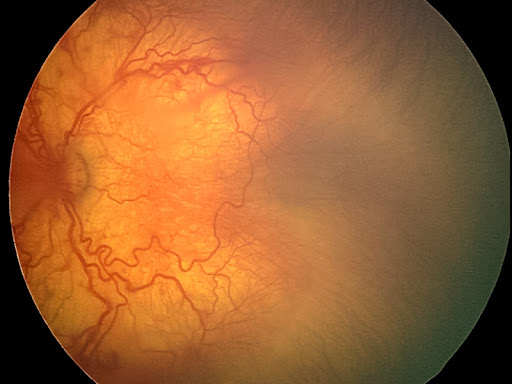
DiYES International School – Retinopathy of Prematurity (ROP) is a serious eye condition that affects premature babies. It is caused by abnormal development of blood vessels in the retina, the light-sensitive tissue at the back of the eye. The condition can lead to vision impairment or even blindness if left untreated. Premature infants, particularly those born before 31 weeks of gestation, are most at risk. Early detection and proper management are crucial to preventing long-term complications.
ROP occurs when blood vessels in the retina grow abnormally in premature babies. During normal development, these blood vessels grow gradually to cover the retina. In premature infants, this process is interrupted. The blood vessels may start growing erratically, leading to scarring and detachment of the retina. Oxygen therapy is a major contributor to the development of ROP. While oxygen is essential for premature babies, excessive oxygen levels can promote abnormal blood vessel growth.
The risk of ROP is directly related to how early a baby is born. The earlier the birth, the higher the risk. Babies born before 32 weeks of gestation or weighing less than 3 pounds are particularly vulnerable. Other factors that increase the risk of developing ROP include the use of mechanical ventilation, long-term oxygen therapy, and infections during pregnancy or after birth. Additionally, the health of the baby’s overall condition plays a role. Infants who face additional health complications may be at higher risk for ROP.
“Read about: Dealing with Sinusitis in Kids: Symptoms, Treatment, and Prevention”
ROP does not always have obvious symptoms in its early stages. In some cases, the condition can progress without showing any noticeable changes in the baby’s behavior. However, if ROP progresses to a severe stage, symptoms such as abnormal eye movements, squinting, or poor visual tracking may appear. To diagnose ROP, doctors perform a retinal examination using special equipment to inspect the blood vessels in the eye. This is typically done by an eye specialist (ophthalmologist) once the baby reaches a certain age, usually around four to six weeks after birth.
ROP is classified into five stages, depending on the severity of the condition. In the early stages, the blood vessels may appear abnormal but do not usually cause significant vision problems. As the disease progresses, the abnormal blood vessels may leak, leading to retinal scarring and detachment. The severity of ROP is classified as follows:
Preventing ROP mainly involves minimizing the risk factors associated with premature birth. Health care providers closely monitor premature infants, especially those who require oxygen therapy. Keeping oxygen levels within a safe range is crucial in preventing the development of ROP. Doctors aim to provide just the right amount of oxygen to support the baby’s health while minimizing the risk of abnormal blood vessel growth in the retina.
Proper prenatal care is another essential preventive measure. Pregnant women should receive regular check-ups and follow medical advice to reduce the chances of preterm labor. Some studies suggest that certain medications or treatments to prevent preterm birth might reduce the risk of ROP.
“Read more: Leptospirosis: A Silent Threat to Children’s Health and How to Protect Them”
If ROP is diagnosed, several treatment options are available. The earlier the treatment, the better the outcome. Mild cases of ROP may resolve on their own without intervention. However, in severe cases, treatments may include laser therapy, cryotherapy (freezing), or surgery. These treatments aim to stop the abnormal growth of blood vessels and reduce the risk of retinal detachment. In some cases, anti-VEGF (vascular endothelial growth factor) injections may be used to help control the abnormal blood vessels.
Retinopathy of Prematurity is a potentially severe condition that affects premature infants, but with early detection and proper treatment, the risk of vision impairment can be minimized. Parents and caregivers must be aware of the risks, and healthcare providers must monitor vulnerable infants closely. Through improved medical practices and early intervention, many babies with ROP can grow up with healthy vision.